But who shall dwell in these worlds if they be inhabited? ... Are we or they Lords of the World? ... And how are all things made for man? ... Kepler (quoted in The Anatomy of Melancholy) --- The War of the Worlds By H. G. Wells
Item Title [Portrait of Orson Welles]. Van Vechten, Carl, 1880-1964, photographer. Created,Published, 1937 Mar. 1.
Notes: Title derived from information on verso of photographic print. Van Vechten number: XVII K 27. Gift; Carl Van Vechten Estate; 1966. Forms part of: Portrait photographs of celebrities, a LOT which in turn forms part of the Carl Van Vechten photograph collection (Library of Congress).
Orson Welles

Digital ID: van 5a52776 Source: intermediary roll film
Retrieve uncompressed archival TIFF version (137 kilobytes) Digital ID: cph 3c19765. Source: b and w film copy neg.
Medium resolution JPEG version (33 kilobytes)
Retrieve higher resolution JPEG version (98 kilobytes)
Medium: 1 photographic print : gelatin silver. Call Number LOT 12735, no. 1177. REPRODUCTION NUMBER LC-USZ62-119765 DLC (b and w film copy neg.)
Special Terms of Use: For publication information see "Carl Van Vechten Photographs (Lots 12735 and 12736)" Part of Van Vechten, Carl, 1880-1964. Portrait photographs of celebrities. Repository: Library of Congress Prints and Photographs Division Washington, D.C. 20540 USA.
Digital ID: (intermediary roll film) van 5a52776
hdl.loc.gov/van.5a52776. (b&w film copy neg.) cph 3c19765
hdl.loc.gov/cph.3c19765
Copyright and Restrictions: Per the instrument of gift, "for a period of 20 years from the date of this Instrument [1966], none of the photographs contained in said collection may be sold, reproduced, published or given away in any form whatsoever except with my [Saul Mauriber, Photographic Executor for Van Vechten] express permission in writing." This restriction expired in 1986. In 1998 the Library's Publishing Office was contacted by Bruce Kellner, Successor Trustee for the Van Vechten estate, who disputes Mr. Mauriber's authority in executing the Instrument of Gift.
Upon review of the relevant materials,
the Library continues to believe that the photographs are in the public domain. However, patrons are advised that Mr. Kellner has expressed his concern that use of Van Vechten's photographs "preserve the integrity" of his work, i.e, that photographs not be colorized or cropped, and that proper credit is given to the photographer
Orson Welles From Wikipedia, the free encyclopedia
George Orson Welles (May 6, 1915 – October 10, 1985) was an iconic Academy Award-winning American director, writer, actor and producer for film, stage, radio and television.
Critical appreciation for Welles has increased since his death. He is now widely acknowledged as one of the most important dramatic artists of the 20th century, in 2002 being voted in a BFI Top Ten Directors poll by the British Film Institute as the greatest film director of all time.
This article is licensed under the
GNU Free Documentation License. It uses material from the
Wikipedia article, Orson Welles
War ot the Worlds

October 30, 1938, Radio program Mercury Theater on the Air presents Orson Welles' production of H.G. Wells' "War of the Worlds," a fictional drama about a Martian invasion in Grovers Mill, New Jersey. The program, which aired on Halloween, sparked a panic among listeners who believed the play was an actual news broadcast.
High Resolution Image (1600 × 1200 pixel, file size: 582 KB, MIME type: image/jpeg)
Of the six million listeners who heard the show, more than 1.7 million reportedly believed the story was true.
"War of the Worlds" panics millions
This is a statue of a Tripod inspired by the book The War of the Worlds and erected as a tribute to the book's author H. G. Wells in the town centre of Woking, England. Gaius Cornelius 17:51, 18 September 2005 (UTC)
I, the copyright holder of this work, (
Gaius Cornelius) hereby release it into the public domain. This applies worldwide. In case this is not legally possible: I grant anyone the right to use this work for any purpose, without any conditions, unless such conditions are required by law.
The War of the Worlds From Wikipedia, the free encyclopedia
The War of the Worlds (1898), by H.G. Wells, is an early science fiction novella which describes an invasion of England by aliens from Mars. It is one of the earliest and best-known depictions of an alien invasion of Earth, and has influenced many others, as well as spawning several films and a television series based on the story.
This article is licensed under the
GNU Free Documentation License. It uses material from the
Wikipedia article, The War of the Worlds
H.G. Wells

H. G. Wells. Immediate image source: Gutenberg.org. Image published in Newcomb, A; Blackford, K.M.H.: Analyzing Character, 1922. Earlier editions from 1916 and 1920 also exist.
This media file is in the public domain in the United States. This applies to U.S. works where the copyright has expired, often because its first publication occurred prior to January 1, 1923. This image might not be in the public domain outside of the United States (this especially applies in Canada, China (not Macao or Taiwan), Germany or Switzerland).
High Resolution Image (443 × 618 pixel, file size: 162 KB, MIME type: image/jpeg)
Works published prior to 1978 were copyright protected for a maximum of 75 years. See
Circular 1 "COPYRIGHT BASICS" from the U.S. Copyright Office. Works published before 1923 (THIS IMAGE) are now in the public domain.
H. G. Wells From Wikipedia, the free encyclopedia
Herbert George Wells (September 21, 1866 – August 13, 1946), better known as H. G. Wells, was an English writer best known for such science fiction novels as The Time Machine, The War of the Worlds, The Invisible Man, The First Men in the Moon and The Island of Doctor Moreau.
He was a prolific writer of both fiction and non-fiction, and produced works in many different genres, including contemporary novels, history, and social commentary. He was also an outspoken socialist. His later works become increasingly political and didactic, and only his early science fiction novels are widely read today. Both Wells and Jules Verne are sometimes referred to as "The Father of Science Fiction"
This article is licensed under the
GNU Free Documentation License. It uses material from the
Wikipedia article, H. G. Wells
.











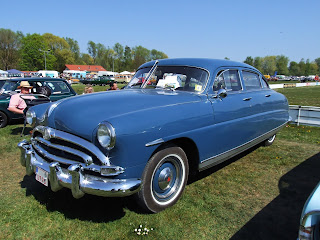


![Native American Heritage Geronimo, Library of Congress, Prints & Photographs Division, [reproduction number, LC-USZ62-36613]](https://blogger.googleusercontent.com/img/b/R29vZ2xl/AVvXsEj0LrbNPz5qwW8ybdFiilQscjJkjmbc59fmYPxxMKESPKH4F-lmxZxYaj9wi7At0hBJoAhQDzZniy8BfFNtS7qUtcmz9ScqTwMCPMQoms7mQ9KIDcGWga2BpunxIajQ01Z3VRoA/s320/native_american_heritage_geronimo_2.jpg)
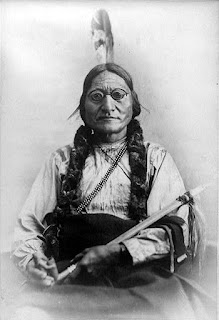


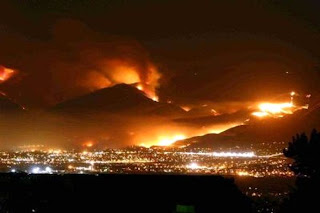
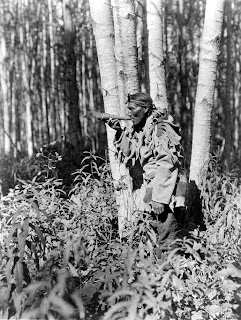

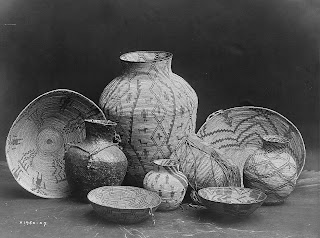
![Native American Heritage Month Two Tepees, Library of Congress, Prints & Photographs Division, Edward S. Curtis Collection, [reproduction number, e.g., LC-USZ62-123456]](http://4.bp.blogspot.com/_TZ4zYEBSw1I/RxkvOl1yArI/AAAAAAAACnU/ahKEduOkJ5A/s320/native_american_heritage_month_two_tepees_2.jpg)
![Thomas Edison, Library of Congress, Prints & Photographs Division, [reproduction number, LC-USZ62-105139]](http://4.bp.blogspot.com/_TZ4zYEBSw1I/RxfveF1yAoI/AAAAAAAACm8/O5dPAeZUAug/s1600/thomas_edison_2.jpg)
![Native American Heritage Month Sioux Chiefs, Library of Congress, Prints & Photographs Division, [reproduction number, LC-USZC4-12466]](http://4.bp.blogspot.com/_TZ4zYEBSw1I/Rxa0nV1yAkI/AAAAAAAACmg/SD7Xmz-voNE/s320/native_american_heritage_month_sioux_chiefs_2.jpg)
![Native American Heritage Month Atsina Warriors, Credit Line: Library of Congress, Prints & Photographs Division, [reproduction number, LC-USZ62-41457]](https://blogger.googleusercontent.com/img/b/R29vZ2xl/AVvXsEiyElj8p9WcdrdJrnBYQ0cszPDuuCTiOatsjlQl1tiVNMfsZHWibJhgrtt_yZhPZFqnfssxTQINC5P4Pvi-SUwY2Nbid313QdxPcA_mM1e0Va6p_uvTYkL7DwJLSv9SDDHSuo-F/s320/native_american_heritage_month_atsina_warriors_2.jpg)






